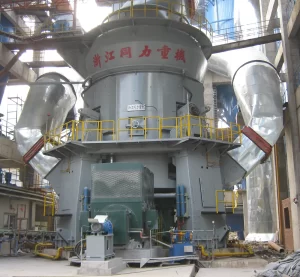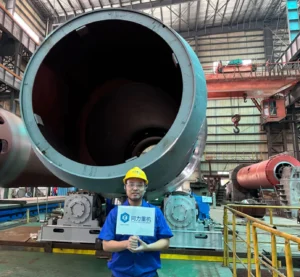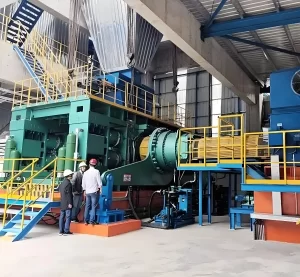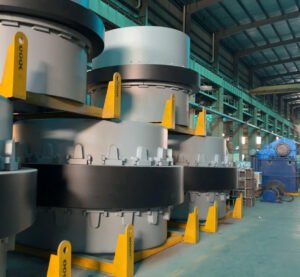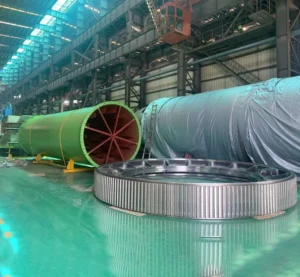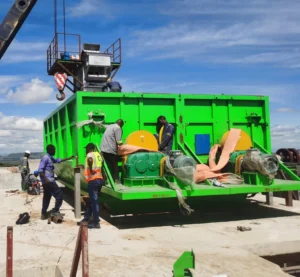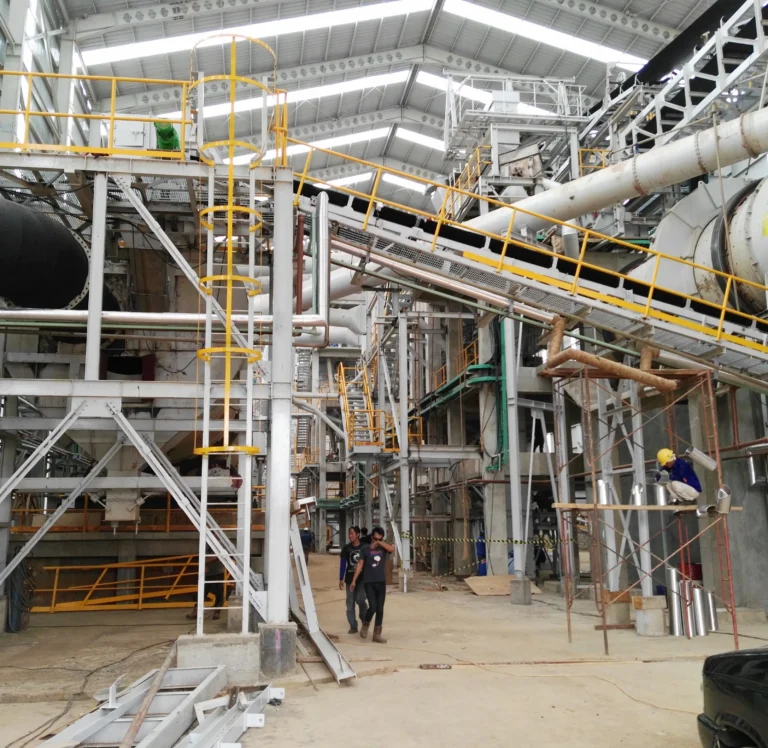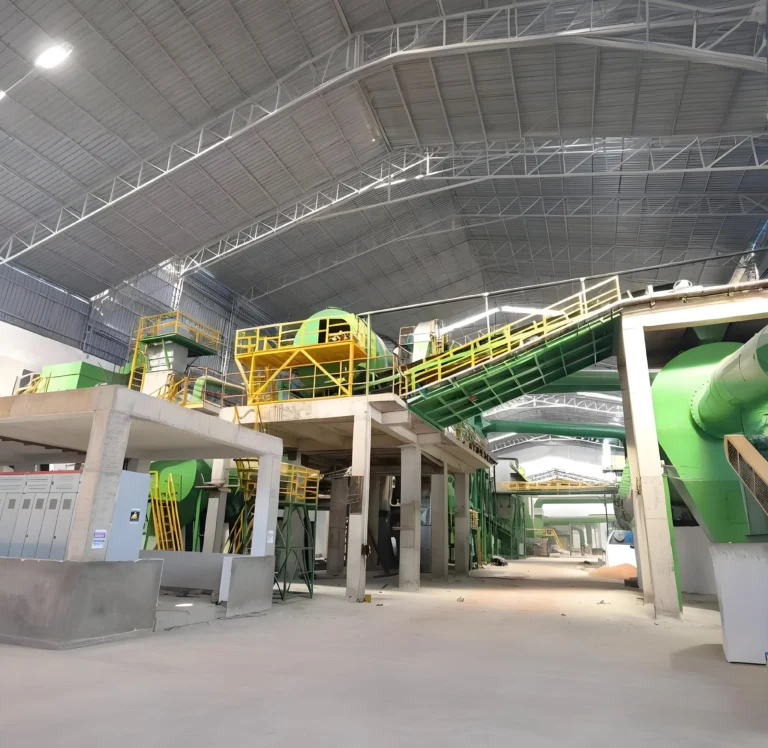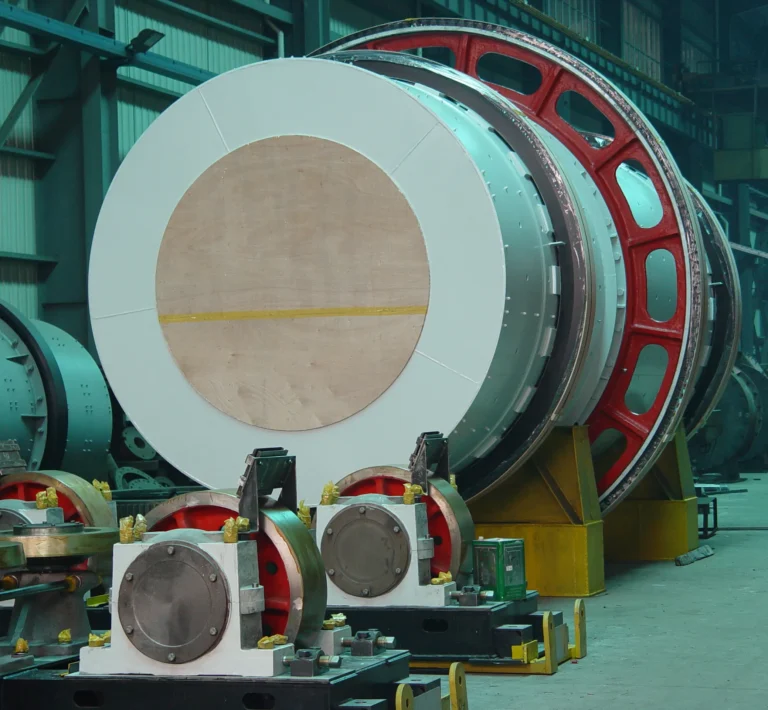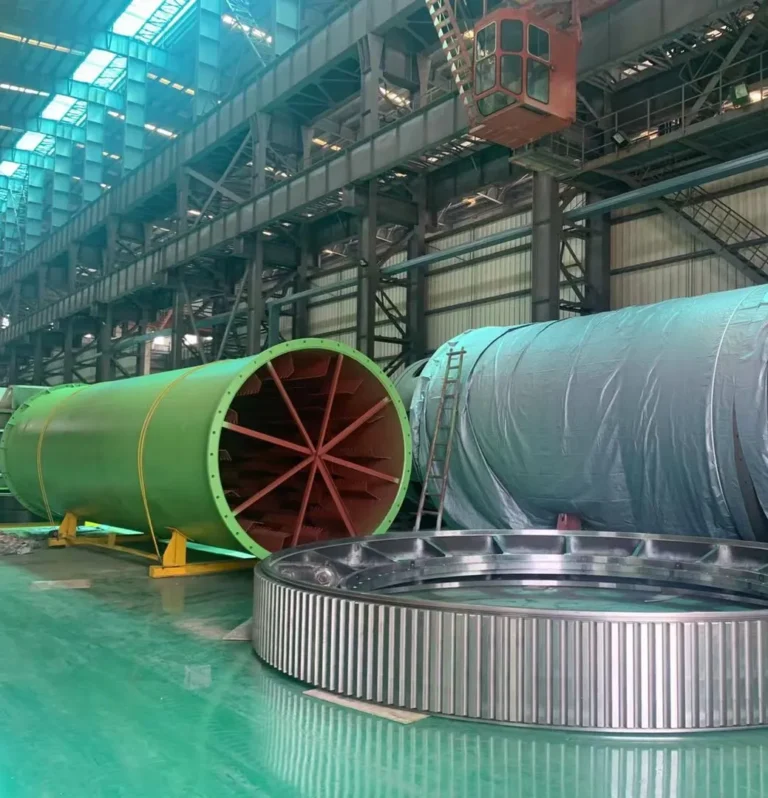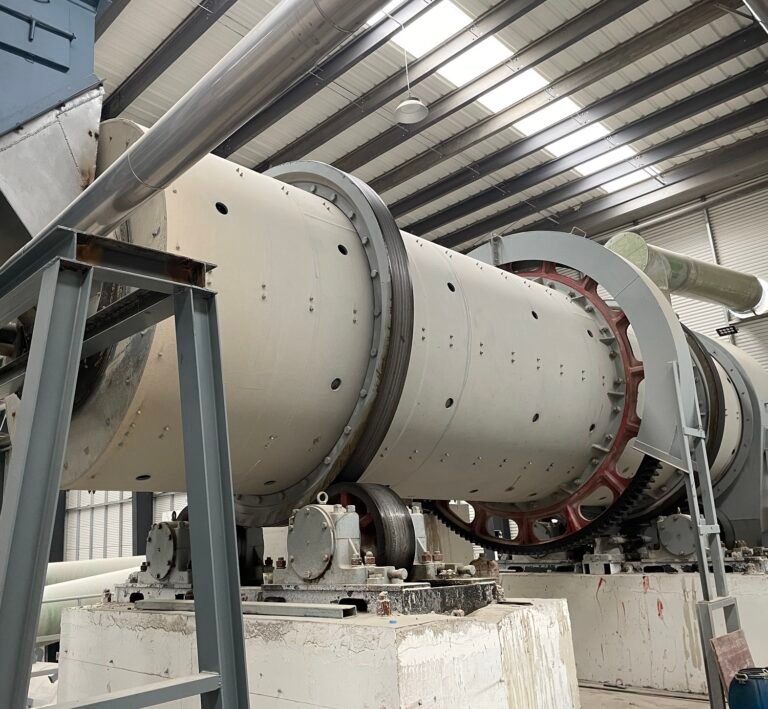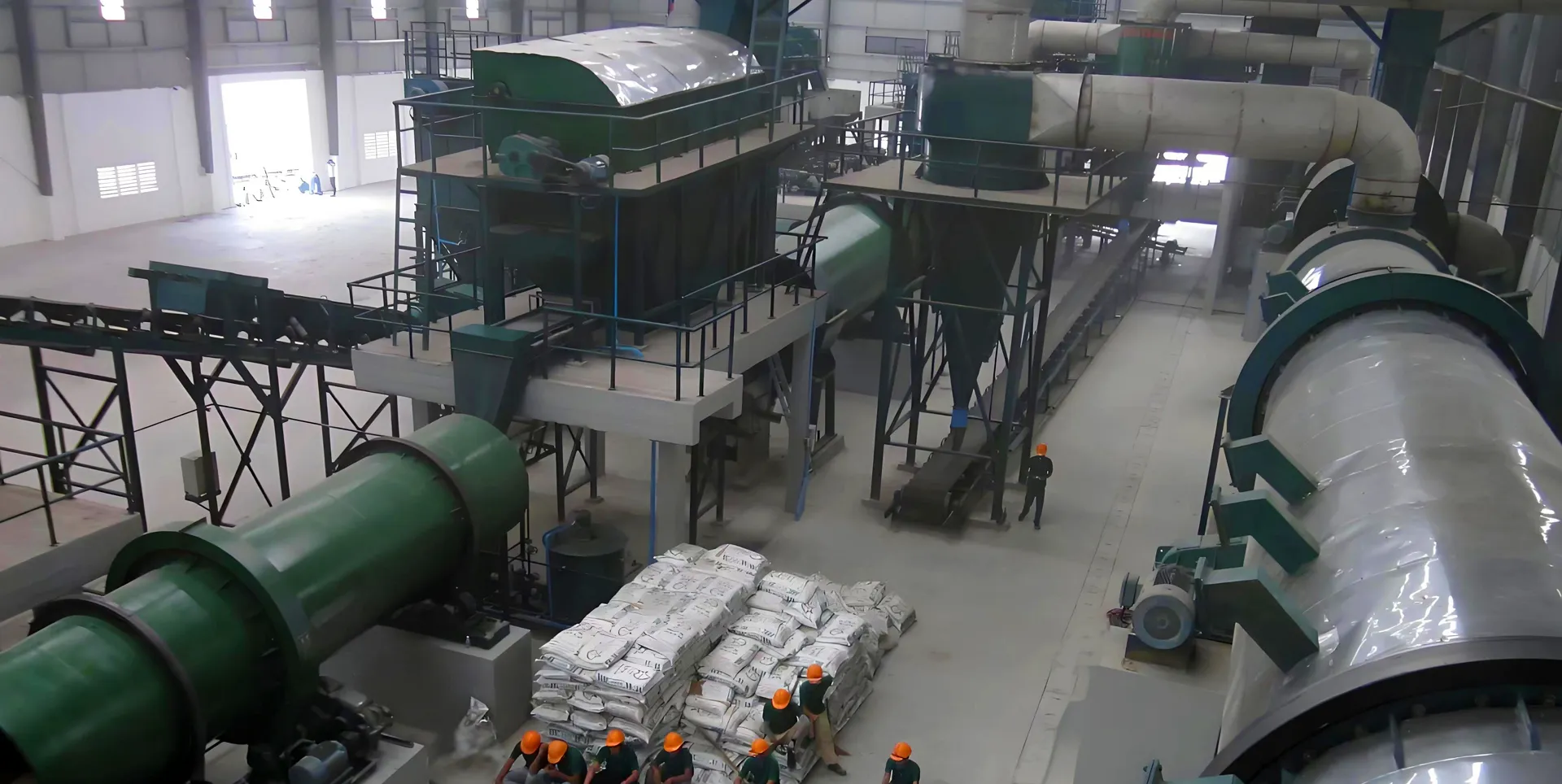
Discover the complete NPK compound fertilizer production line process starting from raw material crushing/batching to granulator, dryer, cooler, coater, screener, automatic packaging. Explore key raw materials like SSP, UREA, KCL, MAP, and DAP for efficient fertilizer manufacturing.
What is npk fertilizer?Everything you need to know.
NPK stands for Nitrogen (N), Phosphorus (P), and Potassium (K), which are the three main nutrients found in fertilizers. These elements are essential for plant growth: Nitrogen (N): Promotes leaf growth and is essential for photosynthesis. Phosphorus (P): Aids in the development of roots, flowers, seeds, and fruit. Potassium (K): Aids in the overall health and disease resistance of the plant. NPK inorganic compound fertilizers are often labeled with an ratio, indicating the proportion of each nutrient, most common one's are 15-15-15, 18-18-18, these two are the all time best seller in chinese market.
What are the raw Materials used in NPK fertilizer production?
| Raw Material | Description | Effects on Plants |
| Single Superphosphate(SSP) | Made from phosphate rock and sulfuric acid, contains 15%-20% phosphorus, and may include some sulfur, beneficial for soil improvement. | Provides phosphorus essential for plant growth, promotes root development, enhances nutrient uptake, encourages flower bud formation, and improves yield and quality. |
| UREA | High-concentration nitrogen fertilizer, contains about 46% nitrogen, available in granular or powder form, highly water-soluble, and suitable for various soils and crops. | Supplies nitrogen to promote vegetative growth, makes leaves lush and green, enhances photosynthesis, and increases plant stress resistance. |
| Potassium Chloride(KCL) | High-concentration potassium fertilizer, contains about 60% potassium, appears as red or white crystals, water-soluble, and suitable for most crops, especially chloride-tolerant ones. | Provides potassium to improve drought resistance, pest resistance, and disease tolerance, increases sugar and starch content, and enhances the quality and flavor of fruits. |
| Monoammonium Phosphate(MAP) | A water-soluble nitrogen and phosphorus fertilizer, contains about 11% nitrogen and 52% phosphorus, acidic in nature, and suitable as a base or top dressing fertilizer for various crops. | Supplies nitrogen and phosphorus, promotes root growth, enhances early growth vigor, and helps crops absorb nutrients quickly. |
| Diammonium Phosphate(DAP) | Contains 18% nitrogen and 46% phosphorus, a slightly alkaline fertilizer with uniform granules, suitable for various soil types and commonly used as base and top dressing fertilizer. | Provides nitrogen and phosphorus, promotes early growth, strengthens root systems, improves crop resistance, and boosts yield and quality. |
What are the types of NPK compound fertilizer?
- Balanced NPK Fertilizers: These have equal proportions of nitrogen, phosphorus, and potassium, like 10-10-10 or 20-20-20. They are suitable for general-purpose use.
- High-Nitrogen Fertilizers: Formulations like 30-10-10 are used for boosting leafy growth in plants such as grasses and leafy vegetables.
- High-Phosphorus Fertilizers: With ratios like 10-30-10, these are ideal for promoting flowering and root development, often used for flowering plants and vegetables.
- High-Potassium Fertilizers: Ratios like 10-10-30 help improve plant health, disease resistance, and stress tolerance, benefiting fruit-bearing plants.
- Specialty Blends: Custom blends tailored for specific plants or growth stages, such as tomato fertilizers or starter fertilizers for new lawns.
What is the process flow of making NPK compound fertilizer?
NPK fertilizer is made through a combination of chemical and physical processes like granulation/drying/cooling/coating/screening to ensure the right balance of nutrients. Here's a general overview:
1. Raw Material Preparation:
The first step in fertilizer production is the preparation of raw materials, including nitrogen from ammonia, urea or ammonium nitrate; phosphorus from processed phosphate rock (such as phosphoric acid or superphosphate); and potassium from potash minerals (such as potassium chloride or potassium sulfate). These materials undergo chemical processing, including ammoniation (reacting ammonia with phosphoric acid to form ammonium phosphate) and neutralization (using acids and bases to form stable compounds). Compound fertilizer factories need to purchase these raw materials in bulk or powder form from the market for compound fertilizer production or use a chain crusher/bulk crusher/dap crusher to turn it from bulk to powder for further processing.
2. Granulation: Using steam drum granulator achieve material agglomeration

The drum granulator uses steam to achieve agglomeration of materials. Its working principle is to add raw materials such as fertilizer powder and water or steam into a rotating drum. Under the action of steam heating and drum rotation, the raw material particles bond with each other to form uniform particles. Usually, the temperature of the steam is controlled between 160°C and 200°C, and the pressure is maintained between 0.4MPa and 0.8MPa. In order to ensure the granulation effect, the amount of steam used varies according to the production volume and material characteristics, usually about 1 to 2 tons of steam per ton of material. This process not only ensures uniform particle size and smooth surface, but also effectively improves fertilizer storage, transportation and application effects. The drum granulator has many advantages: first, it can ensure the consistency and uniformity of the particles and meet the needs of precise fertilization; second, it uses steam heating to significantly reduce energy consumption; in addition, the drum granulator is suitable for It is suitable for large-scale production and has higher production capacity; it can also improve the quality of particles, because the steam process helps better bonding between particles, thereby reducing the production of fine powder.
3. Drying: remove the moistrue from the raw meal

Drying in compound fertilizer production line mainly removes moisture from fertilizer granules with excessive humidity to ensure the quality and stability of fertilizer. During the granulation process, fertilizer granules usually absorb a certain amount of steam moisture. The function of drying section is to evaporate this moisture with hot air generated by hot air furnace to reduce the moisture content of granules (generally controlled at 2-5%). Drying can not only reduce the humidity of granules, but also improve the hardness and strength of granules, ensuring the fluidity and use effect of fertilizer.
Cooling: Efficienctly prevent fertilizer moisture regain and prepare for coating.

The main function of the cooler is to quickly cool the hot fertilizer granules after drying to a suitable temperature to ensure the stability of the subsequent coating of the granules. By exposing the fertilizer granules to cold air, the cooler uses the principle of heat exchange to effectively remove the heat of the granules and reduce their temperature, usually to room temperature or 25-35°C. Cooling effectively avoids the problem of agglomeration caused by high temperature and ensures the fluidity of the fertilizer. In addition, the cooled fertilizer is more adaptable to environmental changes and prevents moisture from re-absorbing moisture, thereby improving storage stability.
Coating: Enhance the anti-caking and moisture-proof properties of fertilizers

The main function of the coating machine in the compound fertilizer production line is to add a protective coating to the fertilizer particles, usually to enhance the anti-caking and moisture-proof properties of the fertilizer and to improve its appearance. During the coating process, some anti-caking agents, moisture-proof agents or other functional coatings are usually used to form a thin film by evenly spraying them on the surface of the fertilizer particles. This film can effectively prevent the fertilizer from absorbing moisture and agglomerating, and improve the fluidity and storage stability of the fertilizer. At the same time, the coating can also provide protection for the fertilizer particles against weathering and hydrolysis. The working principle of the coating equipment is usually to fully contact the fertilizer particles with the coating metering oil and powdered anti-caking agent controlled by the DCS system through a high-speed rotating coating barrel to ensure that each particle can be evenly coated with a protective film. In this process, the spray system in the equipment will evenly spray the coating on the surface of the fertilizer particles, and at the same time help the coating dry through air flow to prevent the coating from sticking together. The surface of the coated fertilizer particles is smooth, the fluidity is better, and it is more suitable for packaging and storage. At the same time, it can effectively avoid agglomeration or water loss during transportation and use.
What are the advantage of NPK compound fertilizer steam drum granulation line?

- High production capacity: One of the biggest advantages of rotary drum granulation npk fertilizer production line is their excellent production capabilities. Compared with traditional disc granulation line, the production efficiency of drum granulation is significantly improved like doubled or trippled. Under standard production conditions, the output of the drum granulator can reach 48 tons per hour, while the disc granulator usually only has a production capacity of 5-10 tons per hour. Therefore, for large-scale fertilizer production enterprises, drum granulators can greatly increase output, shorten production cycles, and meet the growing market demand for fertilizers. For example, in terms of annual production capacity, a drum granulator can produce up to 600,000 tons of fertilizer per year, which is significantly higher than the output of traditional equipment. This enables fertilizer production companies to obtain higher economic benefits in a shorter period of time, thereby enhancing their market competitiveness.
- High-quality pellet forming and strength: The drum granulator has a unique advantage in the strength of pellet forming. Usually, the pellets after drying can reach 20 Newtons. Its design can produce pellets with high hardness and stability, which is crucial for the use and storage of fertilizers. High-hardness pellets can effectively prevent breakage or agglomeration during transportation and storage, ensuring the long-term use and quality of fertilizers. Specifically, the pellets produced by the drum granulator have excellent strength, usually reaching a compressive strength of 10-20N. This minimizes the damage rate of pellets during stacking, handling, packaging and other links. The stability of the pellets can also ensure the slow release of nutrients in the soil, ensuring that plants receive a balanced nutrient supply.
- Producing a variety of fertilizer varieties: The drum granulator is highly adaptable and can handle a variety of raw materials and different types of fertilizer formulations. This makes it particularly outstanding in the production of compound fertilizers. Whether it is nitrogen-phosphorus-potassium (NPK) compound fertilizers or organic and inorganic cow dung and chicken manure fertilizers, the drum granulator can efficiently granulate to meet different production requirements, but extrusion granulation and high tower granulation are more limited and can only produce specific varieties. In actual operation, the drum granulator can flexibly adjust the production process, such as changing the feed rate, steam volume or temperature control, to meet the needs of different fertilizers. Taking NPK compound fertilizers as an example, the drum granulator can easily handle different types of raw materials such as ammonium phosphate, urea, potassium chloride, etc., to ensure uniform mixing and efficient molding of fertilizers.
- Energy saving and reduced operating costs: The drum granulator has obvious advantages in energy saving. Compared with disc granulation and extrusion granulation, the drum granulator has higher energy efficiency and can consume less energy at the same output. Its optimized heat exchange system and fluid dynamic design can effectively reduce energy loss, thereby reducing overall energy consumption. The most important thing is that the output of drum granulation is large, so the unit cost and unit energy consumption are more advantageous. According to statistics, when using a drum granulator to produce fertilizers, compared with traditional equipment, the energy consumption per ton of fertilizer produced can be reduced by about 5%-15%. In addition, the maintenance cost of the drum granulator is also low, the equipment failure rate is low, and its structure is simple, which is easy to maintain and repair. These advantages effectively reduce the operating costs of enterprises and improve economic benefits.
- High degree of automation, reducing manual intervention: The drum granulation production line is equipped with an advanced PLC control system and an intelligent monitoring system, which can monitor key parameters such as temperature, humidity and particle size in the production process in real time. The automated system is able to adjust operating parameters based on real-time data, ensuring the stability of the production process and uniformity of pellet quality. In addition, the drum granulator relies less on labor during operation. It only needs three operators and two other employees for simple monitoring and maintenance. This allows companies to significantly reduce labor costs and improve production efficiency. Specifically, automated systems can reduce labor costs by approximately 30%-40% while improving production efficiency and product quality. The dosing system enables complete automation and remote recipe adjustment.
Frequently asked questions(FAQ) about NPK compound fertilizers Plant
Target output: The target output determines the size of the fertilizer production equipment you need. The capacity of a large NPK fertilizer plant is between 150,000 tons and 300,000 tons per year, the capacity of a medium-sized plant is between 50,000 tons and 150,000 tons, and the capacity of a small plant is less than 50,000 tons.
Site size: A large NPK compound fertilizer production line with an annual output of 200,000 tons requires not only an equipment plant, but also a raw material plant, a finished product plant and an office building. The equipment area alone requires a site of about 20x50m, and this is the site size when a bucket elevator and a belt conveyor are used. If all belt conveyors are used, the area will be even larger.
Funding: The compound fertilizer production line has high efficiency, but it also requires a lot of funds. A 200,000-ton high-quality NPK compound fertilizer production line requires about 4 million US dollars for the equipment alone, and low-quality equipment produced by Henan manufacturers requires about 700,000 US dollars. However, low-quality equipment will be scrapped within 5 years, so it depends on customer needs. If high-quality equipment is required, the price will be much higher, but continuous production can be achieved. Low-quality equipment breaks down all the time, the error in the proportion of ingredients is large, and the particle strength is low, which will have an irreversible impact on the reputation of the compound fertilizer brand.
Saving energy and investment: The extrusion granulation process is widely used around the world. Using this process can significantly reduce energy consumption and save investment. The roller extrusion granulation equipment operates at normal temperature, avoiding the need for fuel in other granulators. Moreover, because the temperature of the particles is low and the moisture content is also low, there is no need to configure additional drying and cooling equipment, thus saving equipment investment.
Reduce pollution emissions: Compared with traditional processes, the double-roller granulator does not need to use fuel for heating, significantly reducing exhaust emissions. At the same time, the equipment is driven by electricity and will not produce harmful pollution to the environment.
Precise batching: The static batching system is equipped with electronic weighing equipment, which can accurately batch batching with a batching accuracy of up to 2%. This scientific and reasonable batching method ensures the uniformity of raw materials and product quality.
Uniform mixing: The horizontal mixer mixes the materials quickly and evenly by counter-rotating the stirring paddle, ensuring that each batch of products has consistent quality.
High-precision packaging: The equipment of the extrusion granulation compound fertilizer production line is easy to operate. The automatic packaging scale is controlled by a computer and the operation interface is intuitive and simple. The batching system consists of feeding, weighing, silo and conveying systems. It has a high degree of automation. Operators only need to be responsible for simple feeding and control, which reduces labor costs.
There are many types of NPK compound fertilizer production lines, which can be divided into the following four categories according to different processes.
Steam drum granulation line: The steam drum granulation line adopts the principle of thermal reaction between steam and materials, and brings the wet materials into the granulator through steam heating to form granules. It is suitable for making high-quality organic-inorganic compound fertilizers, and can effectively improve the strength and stability of the granules. By introducing steam, the materials can be moistened and bonded under low temperature conditions, helping to improve the uniformity and density of the finished granules. This is the most widely used fertilizer production process in the world.
Extrusion granulation production line: The extrusion granulation production line adopts roller granulation technology to extrude fertilizer powder into granules through roller pressing equipment. This process does not require steam, and the materials are compressed to form granules with low moisture content and low energy consumption. Extrusion granulation production lines are usually used to produce organic fertilizers and compound fertilizers, and have weak adaptability to raw materials. The advantages of this production line include high efficiency and energy saving, uniform and high strength of product granules, and low production costs. Since no additional drying steps are required, it can reduce energy consumption in the production process and is suitable for small-scale flexible production.
High tower granulation production line: The high tower granulation production line is a technology suitable for large-scale production of compound fertilizers. It mainly generates granules by reacting liquid fertilizers with solid fertilizers. Its core feature is to spray the molten or dissolved fertilizer liquid onto the particle matrix through a spray tower, and form granules after cooling and solidification. This production line can accurately control the size, shape and quality of the granules. The fertilizer granules produced have a smooth surface, regular shape, high hardness and solubility. High tower granulation is suitable for large-volume and high-standard fertilizer production, which can meet the fertilizer needs of specific crops, and the production process is more environmentally friendly and energy-saving.
BB fertilizer mixing line: BB fertilizer (Bulk Blended Fertilizer) mixing line is a device used to mix various single fertilizer components such as nitrogen, phosphorus, potassium and trace elements in a predetermined ratio. The main advantages of this production line are simple equipment, low investment cost, and the formula can be adjusted according to market demand. BB fertilizer mixing lines usually use efficient mixers to accurately mix different fertilizer raw materials to ensure that the nutrients of each granule are uniform. Since no chemical reaction process is required, the production line operates efficiently and is suitable for large-scale production, especially for large-scale customized fertilizer needs.
Each Tongli NPK fertilizer production line is tailor-made by our team of experts. First, we will help you choose which fertilizer your raw materials are suitable for producing based on the type and quantity of your raw materials. Then, our experts will provide you with suggestions on the size of the plant based on your required output. For example, if you want a fertilizer production line with an annual output of 300,000 tons, we recommend the drum granulation process. Next, Tongli's experts will make a preliminary plan and equipment list and quotation based on the size of your plant. If both parties are satisfied with the plan, Tongli engineers will issue a detailed layout drawing and provide detailed 3D views after the contract takes effect.
Time to apply NPK compound fertilizer: Choosing the right time to apply NPK compound fertilizer is key to ensuring that plants absorb nutrients. Most plants respond best to fertilization in early spring, when soil temperatures gradually rise and plants begin to enter a period of rapid growth. For foliage plants and fruit trees, fertilization can be applied before germination or after flowering to provide the plants with the necessary growth momentum. Vegetable crops can be applied before sowing or in the early growth stage to promote root development and rapid growth of stems and leaves. For winter crops or perennials, fertilization can be applied at the end of the dormant period to support their new growth cycle. The specific time should be considered in combination with the crop type, local climate and growth stage.
Frequency of applying NPK compound fertilizer: The frequency of fertilization should be determined based on the nutrient requirements of the plant, the type of fertilizer and the fertility of the soil. Generally speaking, most plants can be fertilized once every 2 to 3 months to maintain growth needs. Fast-growing vegetables may require more frequent fertilization, such as once every 3 to 4 weeks, to meet their high nutrient requirements. Fruit trees and flowers can increase the frequency of fertilization appropriately according to their key growth periods, such as flowering and fruiting. For long-lasting compound fertilizers, a single application can last for several months, avoiding frequent operations and reducing the risk of nutrient loss. During the fertilization process, the performance of the plants should be closely observed and the frequency should be adjusted to meet their actual needs.
NPK compound fertilizer formulas for different plants: Different plants have different requirements for nitrogen, phosphorus and potassium, so a suitable NPK compound fertilizer formula should be selected. For example, the general 15-15-15 compound fertilizer is suitable for most plants and can provide balanced nutrients to support all-round growth. For plants with higher nitrogen requirements such as leafy vegetables and foliage plants, the 18-18-18 formula is more suitable, and its higher nitrogen content helps the leaves to be lush and green. For fruit trees or flowering plants that require high phosphorus and potassium, a formula rich in phosphorus and potassium can be selected to enhance flowering and fruiting. When choosing a formula, it is necessary to combine the growth stage and specific needs of the plant to avoid nutrient waste or imbalance in proportions.
Methods of applying NPK compound fertilizers: The application method of NPK compound fertilizers should be adjusted according to its morphology and plant species. Granular compound fertilizers can be sprinkled directly on the soil surface, then mixed evenly into the soil by turning the soil or shallow burying, and watered in time to promote nutrient release. For liquid compound fertilizers, dilute to the recommended concentration according to the instructions, and then apply evenly to the root zone or leaves of the plant. Be careful to avoid spraying too concentrated to avoid burning the plant. If using spiked or tablet fertilizers, place them in the soil around the roots of the plant to ensure that the nutrients are directly applied to the root system when released. After applying any form of fertilizer, keep the soil moist to help the plant absorb nutrients quickly.
Conclusion: All in a nut shell
The NPK compound fertilizer production line uses scientific process flow and efficient equipment configuration to efficiently produce main raw materials such as SSP (monoammonium phosphate), urea, potassium chloride (KCL), ammonium phosphate (MAP), and diammonium phosphate (DAP). granules, ensuring full utilization of raw materials and stable quality of finished products. During the production process, the granulator, dryer, cooler and coating machine work together to not only ensure the uniformity and strength of the particles, but also extend the storage period of the fertilizer and improve its anti-caking properties. It is worth mentioning that the drum granulation production line, with its flexibility and high efficiency, can produce a variety of NPK compound fertilizer products including organic fertilizers, inorganic fertilizers and organic-inorganic mixed fertilizers. It is not only able to produce formulas that meet the needs of different crops according to market demand, but also has the significant advantage of low unit production cost. Such a production process brings higher economic benefits to enterprises, and also provides agricultural producers with more diversified choices to meet the nutritional needs of crops at different growth stages.

